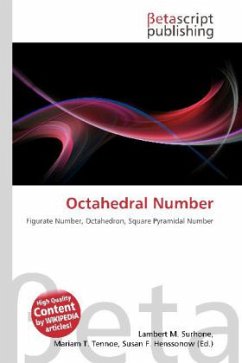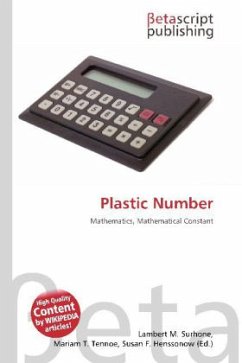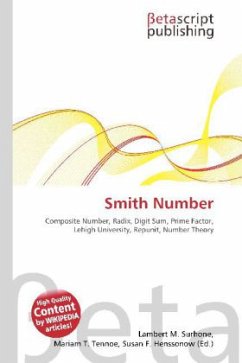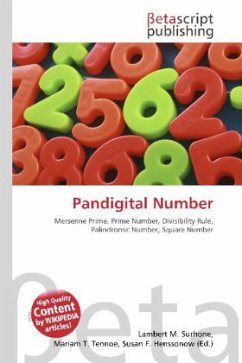
Octahedral Number
Versandkostenfrei!
Versandfertig in 6-10 Tagen
23,99 €
inkl. MwSt.

PAYBACK Punkte
12 °P sammeln!
Please note that the content of this book primarily consists of articles available from Wikipedia or other free sources online. An octahedral number is a figurate number that represents an octahedron, or two square pyramids placed together, one upside-down underneath the other. Sir Frederick Pollock conjectured in 1850 that every number is the sum of at most 7 octahedral numbers (Dickson 2005, p. 23). The triangular numbers can be generalized in various ways. As used here, and in a number of other places, the term figurate number is meant to be broadly inclusive. In historical works about Gree...
Please note that the content of this book primarily consists of articles available from Wikipedia or other free sources online. An octahedral number is a figurate number that represents an octahedron, or two square pyramids placed together, one upside-down underneath the other. Sir Frederick Pollock conjectured in 1850 that every number is the sum of at most 7 octahedral numbers (Dickson 2005, p. 23). The triangular numbers can be generalized in various ways. As used here, and in a number of other places, the term figurate number is meant to be broadly inclusive. In historical works about Greek mathematics the preferred term is figured number. For example A history of Greek Mathematics by T. Heath and Greek Mathematical Philosophy by E.A. Maziarz.












